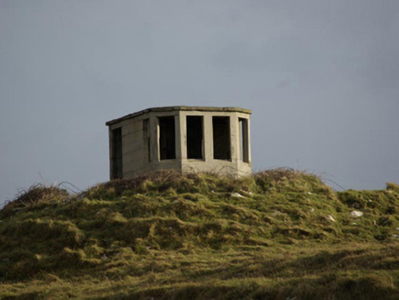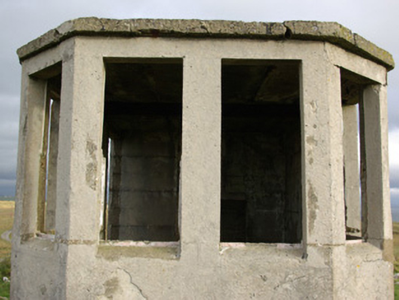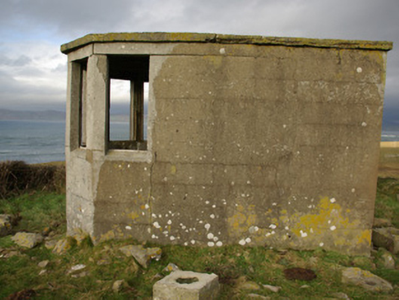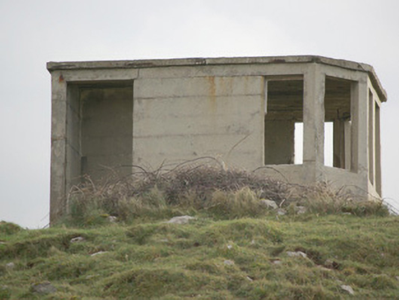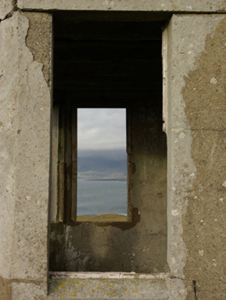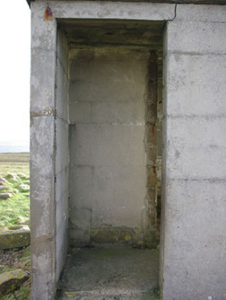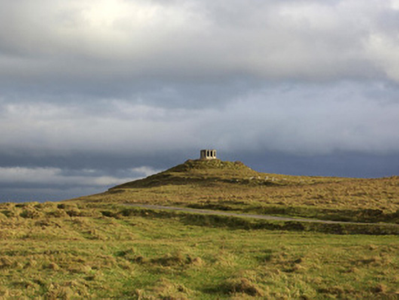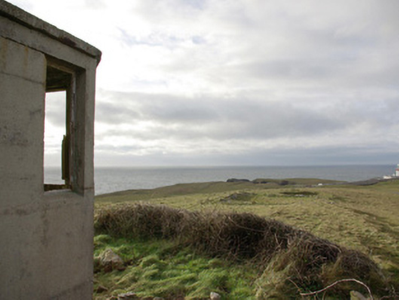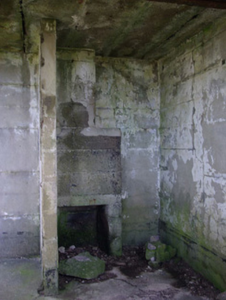Survey Data
Reg No
40909729
Rating
Regional
Categories of Special Interest
Architectural, Historical
Original Use
Signal tower
Date
1935 - 1945
Coordinates
170652, 369196
Date Recorded
05/11/2007
Date Updated
--/--/--
Description
Remains of single-bay single-cell single-storey World War Two-era coastal watchman’s hut, in use c. 1939 – 45, having canted front elevation (south-west). Now out of use. Flat concrete roof. Mass concrete walls having square-headed window openings, fittings now gone. Square-headed doorway to the north-west elevation, fittings now gone. Fire place to interior at the north-east end. Located in a prominent elevated location on an elevated site close to the tip of St. John’s Point, and adjacent to the lighthouse (see 40909717), with extensive sea views to three sides. Located close to the site of a former Napoleonic-era signal tower, now largely demolished above ground level.
Appraisal
This unassuming former World War Two-era former watchman’s hut is a structure of some historical interest. It was originally built by the Irish Army/Navy to keep watch for shipping, submarine, and aircraft activity in and over Irish waters during the Second World War, details of which was subsequently reported back to central command. It was one of over eighty such structures built along the Irish coastline in the first years of the war. It is a simple structure constructed of mass reinforced concrete and was designed to provide basic comfort for the watchman/men on duty, having a fireplace to one wall. They were equipped with telephone, semaphore, and Morse code machines. The canted front provided an excellent view in three directions. It is one of a number of such surviving structures in County Donegal, and acts as a subtle historical reminder of this period in Irish history. Located in a dramatic coastal location and surrounded on three sides by the Atlantic Ocean, this structure is an integral element of the built heritage and maritime heritage of the local area. It is located adjacent to the site of a former Napoleonic-era signal tower, now demolished above ground level, which attests to a long running strategic interest in this location.

